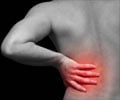A NEW study conducted by the American Physical Therapy Association claims to put an end to the common low back and neck pain. A procedure called nucleoplasty performed by Dr. Chen MD directorof the Stanford Interventional Centre and an assitant professor of functional restoration, stanford promises to provide relief./Nucleoplasty was designed to treat herniated disk, a condition in which the soft, gel-like substance found in the centre of a disk presses on the spinal nerves, causing pain in the lower back, numbness or weakness in the leg.
He uses nucleoplasty to remove problem tissue and apply controlled levels of heat to the affected disk and low thermal energy to relieve pressure in an intervertebral disk. During the procedure, he mildly sedates his patient and, with the guidance of X-ray image, advances a needle into the disk. He then places a special wand through the needle, releasing radio-frequency energy that heats the area, evaporating the nucleus material inside the disk.Dr.Chen feels that the goal is to decrease disk pressure so it doesn’t pinch the nerve and so the pain is taken away.Lower back pain is one of the most common ailments affectig adults; as many as four out of five Americans experience significant back problems during their lives. Back pain is the second most common reason for doctor visits, and herniated disk is the culprit for many. The condition can be caused by such thing as trauma, strenuous activity, genetics and age.
According to the American Association of Neurological Surgeons, 90 per cent of herniated disks can be treated with conservative therapies such as bed rest, exercise or anti-inflammatory medications. In the past, surgery such as a diskectomy in which the protruding disk is removed has been the only option for patients who do not respond to conservative therapies and whose pain affects their everyday lives.Nucleoplasty claims to have a number of benefits over invasive surgery because this is quick and painless.






